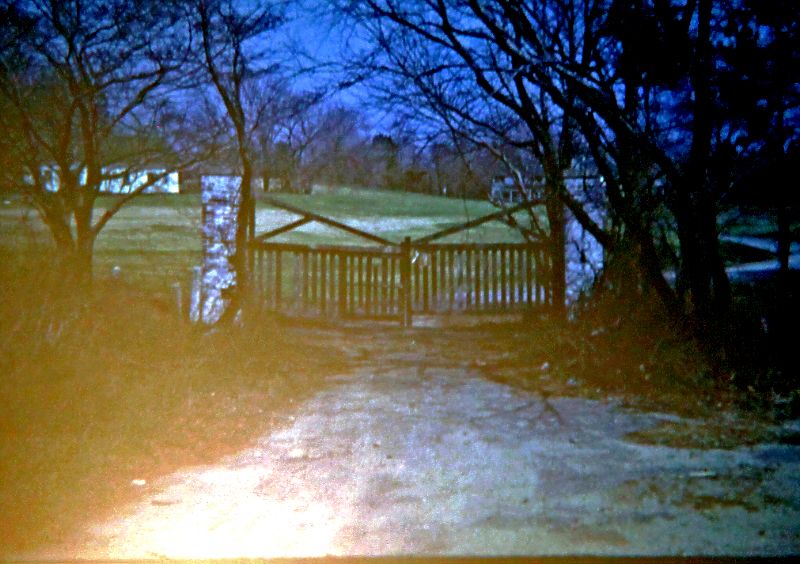Quick side note before moving on.
The club bordered the Long Island Motor Parkway (a phenomenon worthy of its own study). The Parkway was a private roadway running along the breadth of Long Island. There are reports of a handful of secret entrances along the way, including one from the grounds of The Links Club (pictured below). Once you track the involvement of William K. Vanderbilt in both enterprises, it all makes sense.
It does beg the question if the proximity to the LIMP made the choice of the location for the club that much easier.

Tim Martin,
I am going to answer you Post 62 question by using this post by Sven. If you look to the building on the right that is the Clubhouse a converted farm house. The building on the left, separated by the 10th fairway, is large farm barn. This barn had a top level that housed the pro shop. The pro and his wife, Joe and Julie Phillips, resided on that top level as well with modest accommodations. This level also had a workshop for the pro and housed members golf bags. The groundskeeper, Ben Zukosky, also stored his clubs there. He and the Phillips dog, Laddie, would often have a turf war back there!
The bottom level of the barn was the groundskeepers domain. The of majority of the mechanical equipment was kept there. During the winter months Ben's skeleton crew were busy servicing equipment. Julie Phillips would tell me stories of how offensive the gasoline odor would permeate into there living quarters.
Detached from the barn was a deep large garage that housed a handful of golf carts. They were discouraged at this Club. Jock Whitney and William Paley were two of the most notable exceptions that had carts there. The Phillips parked their cars there which included a first generation Ford Thunderbird. There was also a very old inoperable Model T that was stored there. Also attached to the garage was the caddie house. It had seen its better days when I first arrived on the scene and was hardly occupied.
Behind the garage was a smaller barn but still large that housed fertilizer, chemical supplies, etc. and perhaps some additional machinery. This barn was adjacent to the 11th fairway. Sometimes balls from errant drives would find there way there. Back on the course, there was somewhat of a maintenance area off to the left of the 2nd hole foot bridge. It did not contain a building structure however. Actually it was more of a dumpsite and to be frank an eyesore.